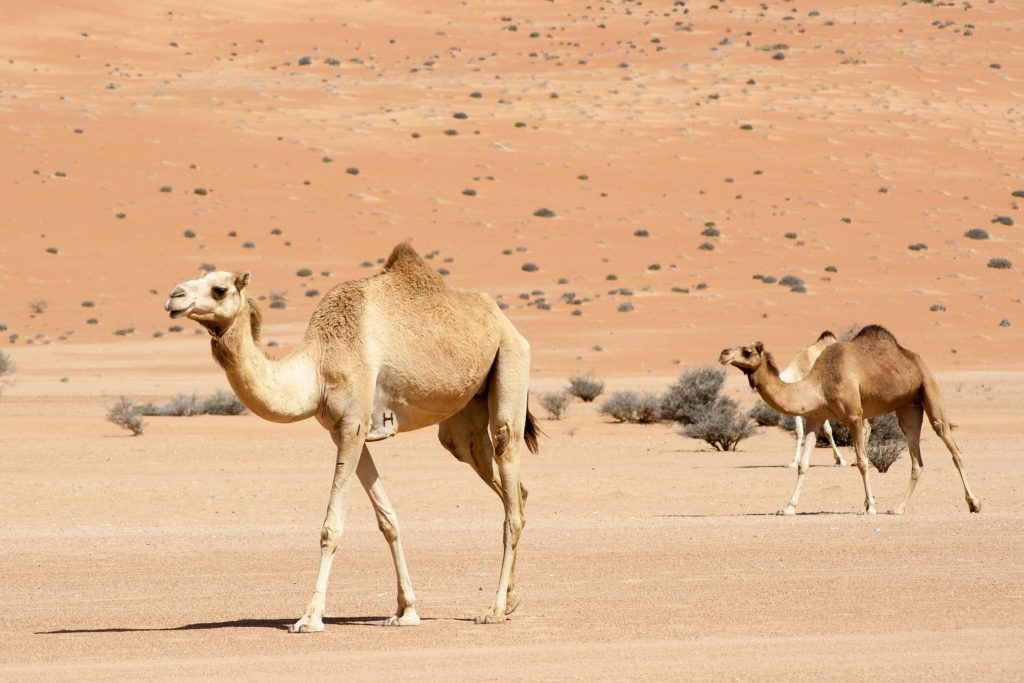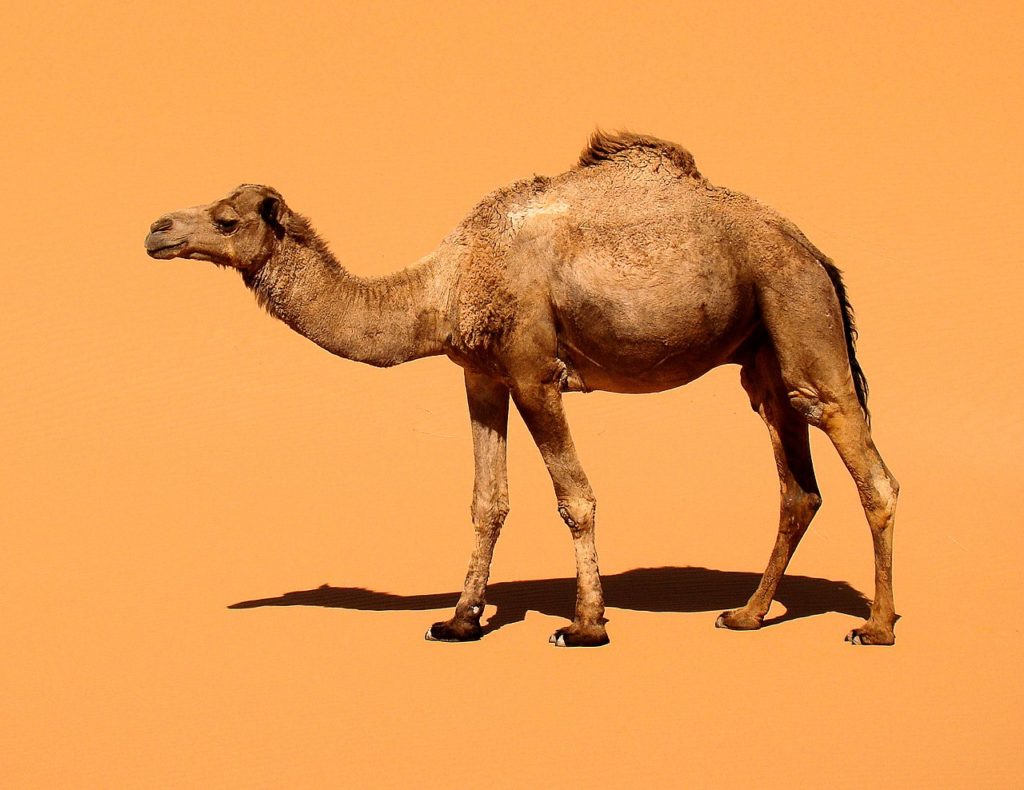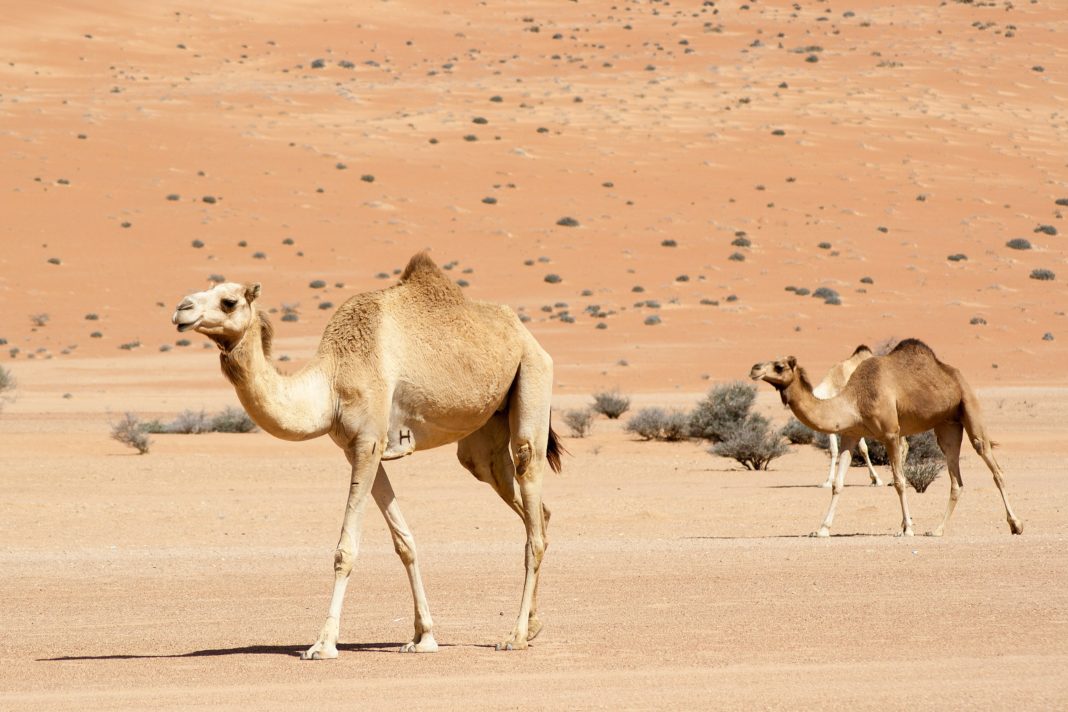The dromedary has a head and body length of 2.3-3.5 m, a tail length of 55 cm, a shoulder height of 1.8-2.1 m (maximum 2.4 m) and a weight of 450–690 kg. It is native to the Middle East, but survives today as a feral animal only in Australia and Spain, and as a domestic animal elsewhere.

The species’ distinctive features include its long, curved neck, narrow chest, a single hump (compared with two on the Bactrian camel and wild Bactrian camel), and long hairs on the throat, shoulders and hump. The coat is generally a shade of brown. The hump, 20 cm tall or more, is made of fat bound together by fibrous tissue.
Dromedaries are mainly active during daylight hours. They form herds of about 20 individuals, which are led by a dominant male. They feed on foliage and desert vegetation; several adaptations, such as the ability to tolerate losing more than 30% of its total water content, allow it to thrive in its desert habitat. Mating occurs annually and peaks in the rainy season; females bear a single calf after a gestation of 15 months.

The dromedary has not occurred naturally in the wild for nearly 2,000 years. It was probably first domesticated in the Arabian Peninsula about 4,000 years ago, or in Somalia where there are paintings in Laas Geel that figure it from 5,000 to 9,000 years ago. In the wild, the dromedary inhabited arid regions, including the Sahara Desert. The domesticated dromedary is generally found in the semi-arid to arid regions of the Old World, mainly in Africa and the Arabian Peninsula, and a significant feral population occurs in Australia. Products of the dromedary, including its meat and milk, support several North African tribes; it is also commonly used for riding and as a pack animal.
According to Wikipedia















